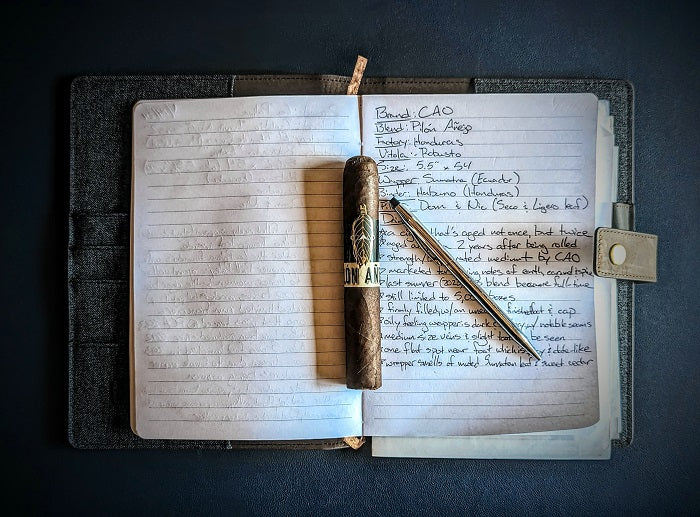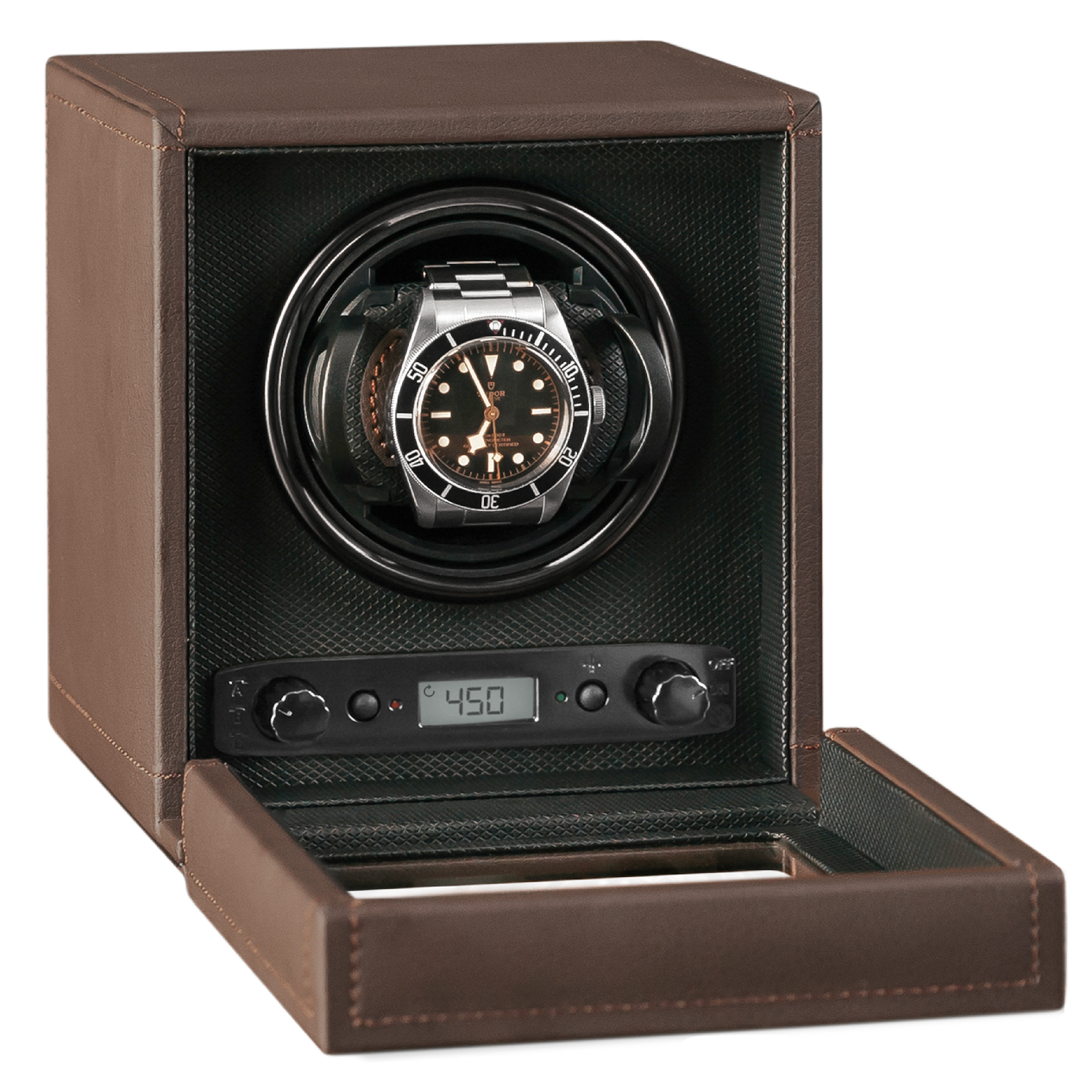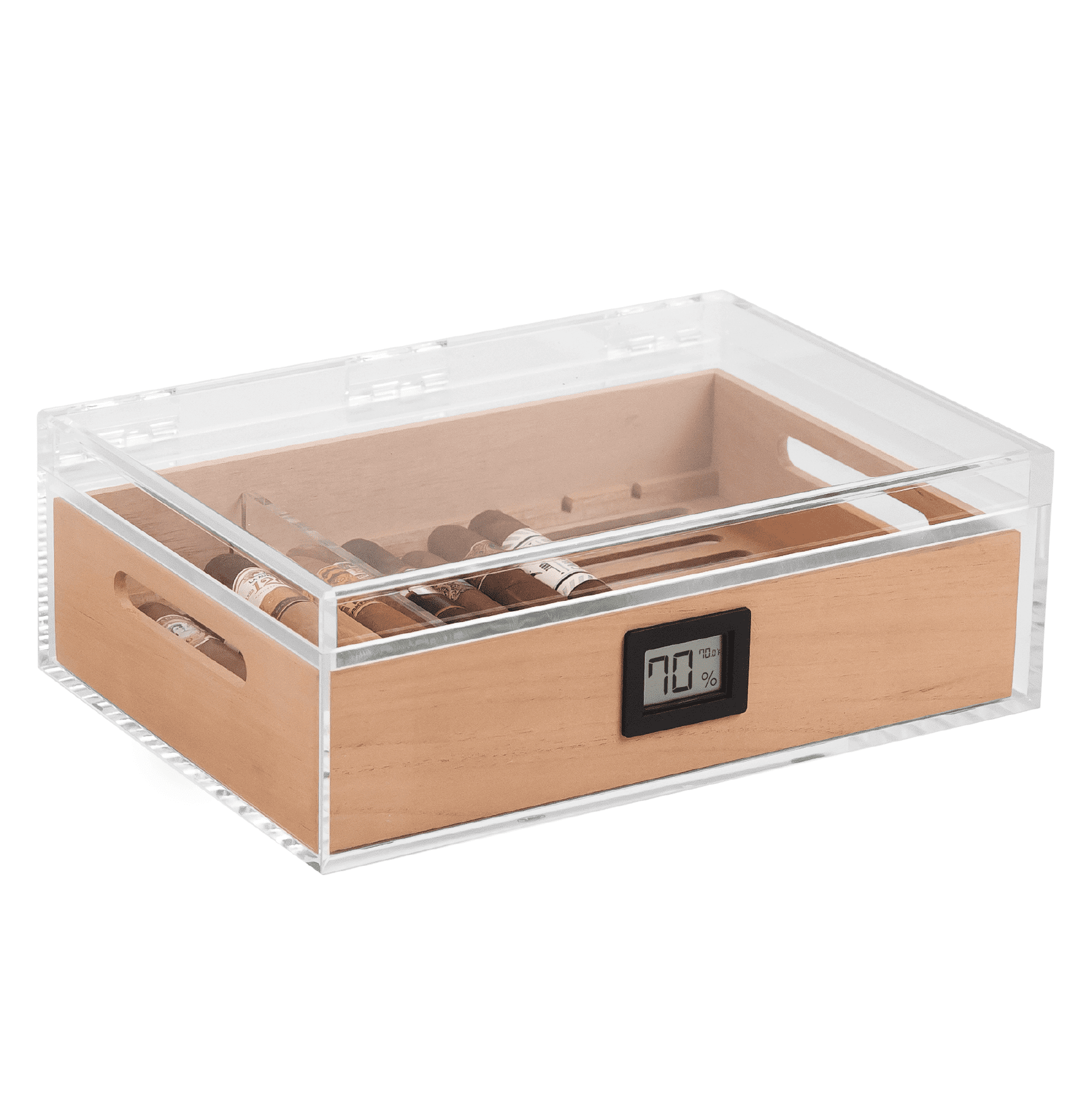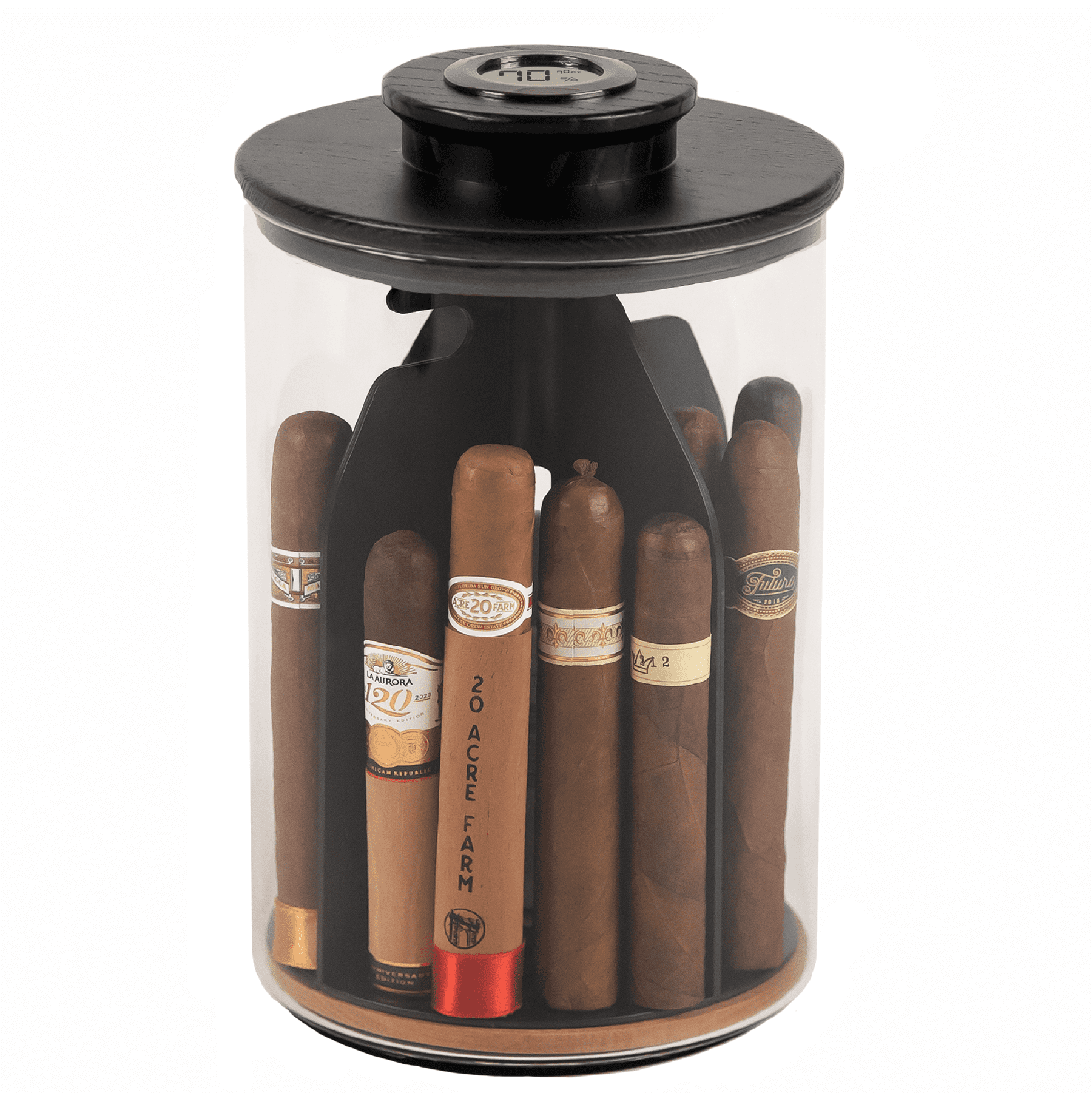You may think there’s not a lot at work inside your humidor. Just a little bit of humidity, some Spanish cedar, it breaths in, it breathes out, et voila, your cigars are kept in perfect smoking condition.
But of course there’s more to it than that. While it’s true, humidors are relatively simple machines—they’ve been around for hundreds of years, after all—there’s a lot of science at work inside your stogie storers. Specifically, regarding humidification.
There are two types of humification processes that can be employed inside a humidor. And while they both work perfectly well, different humidors take better to different humidification processes.
How does humidor humidification work?
Before we talk about the specifics, let’s look at how humidification in a humidor works in general.
A humidor requires humidity (it’s practically in its name) to do its job. All humidors have some source of moisture which, when maintained at a certain temperature, becomes humidity.
Here’s how it works: when you season a humidor, you’re adding some source of moisture. That may be the common two-way humidification system, a hydro tray—especially if you’re seasoning a Klaro humidor–or a much larger humidification system, all ultimately depending on the size of your humidor.
As moisture is released into the interior of your humidor, it’s absorbed by the lining, which is made of Spanish cedar. This particularly absorbent wood holds as much as it can before the environment inside the box equalizes. Then, once additional trays and cigars are placed back into the humidor, the lining begins to breathe. This releases moisture back into the environment, which in turn is absorbed by your cigars. As things reach equilibrium, a hygrometer (a tool that measures humidity) should read between 67-72 percent.
Seasoning a humidor isn’t a tall task, but there are a lot of schools of thought on the right way to go about it. We’ll cover those more below. With a variety of ways to humidify a humidor, let’s look at the difference between active and passive humidification.
What is active humidification?
Active humidification means that there’s some kind of mechanical device actively adding moisture to the air. These devices often include a fan or blower of some kind that circulates the air and is programmed with a hygrometer to maintain a specific level of humidor humidity in an environment. There are dozens of active humidification systems on the market, with varying levels of bells and whistles—like Bluetooth or Wi-Fi compatibility that allows you to monitor humidity and temperature levels on your mobile devices. There’s usually something powering these systems, whether batteries or electricity.
Most commonly, active humidification systems are used in larger humidors. The walk-in type you find in cigar stores, for example, requires a lot of humidity for the space, so a machine makes the most sense. Lately, though, there are several smaller units that are designed for at-home use. Even if you’re not building a full walk-in humidor in your home, you may be converting a closet or using another relatively large space as your humidor, and these active systems work like a charm.
What is passive humidification?
Passive humidification is a much simpler system. If you’ve ever seasoned a desktop humidor, you probably used a passive humidification system. You add the moisture source…and that’s about it. While it’s on you to monitor the humidor a little more closely since you don’t have a machine regulating humidity levels for you, the moisture and the Spanish cedar inside the box do all the work.
Common passive humidification systems include the aforementioned two-step version, as well as the hydro tray option used with our Klaro humidors. These methods tend to work ideally with smaller humidors—like travel and desktop humidors. While there are some active humidification systems on the market that would fit inside some of our humidors, they take up valuable cigar storage space. Passive systems release plenty of humidity for smaller humidors.
Which one is right for my humidor?
As you can probably guess by now, the right humidification system for your humidor depends primarily on its size. Active humidification systems are ideal for larger humidors, from walk-ins to closets to armoires. The additional space necessitates the additional moisture, and the movement of air helps maintain even humidity levels across the entirety of the area.
On the flip side, passive humidification systems are perfect for smaller humidors. That said, not all of these systems are created equally. Our research finds that the two-step system works perfectly well in particularly small humidors, like those that are travel size. For larger humidors, they just don’t pack the right kind of punch to keep everything at the correct levels.
Desktop and medium-sized humidors work far better with a hydro tray. When you buy a Klaro humidor, for example, you receive everything you need to season your humidor: a hydro tray, gel solution, and our specially-formulated seasoning solution. We also offer a Winter and Dry Climate version for particularly dry humidors. This system is proven to provide optimal humidification levels inside our medium- and large-sized Klaro humidors.
Some suggest that wiping down the lining of a humidor with a damp rag or sponge is an efficient way to create passive humidification, but this method can actually damage the humidor by warping the interior. Without a firm seal, a humidor won’t be efficient no matter how much moisture you introduce.
No matter which system you employ, a hygrometer is the most important tool you can have to make sure you’re maintaining an optimal level of humidity. As you’re sure to know by now, a humidor that’s too dry leads to dry, brittle, and acrid-tasting cigars. One that’s too moist can cause your cigars to mold or even to an infestation of tobacco beetles.
Whether active or passive, choose the humidification level that’s right for you and your humidor. Experiment as you need to in order to find the perfect level, because a perfectly seasoned cigar offers an experience unlike any other.















